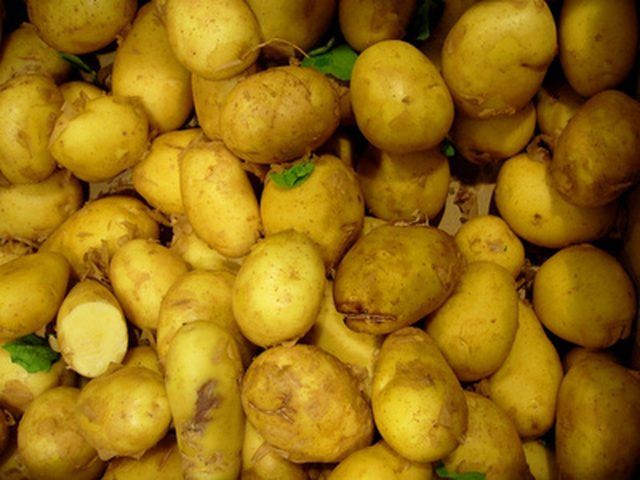Bulbs
Flower Basics
Flower Beds & Specialty Gardens
Flower Garden
Garden Furniture
Garden Gnomes
Garden Seeds
Garden Sheds
Garden Statues
Garden Tools & Supplies
Gardening Basics
Green & Organic
Groundcovers & Vines
Growing Annuals
Growing Basil
Growing Beans
Growing Berries
Growing Blueberries
Growing Cactus
Growing Corn
Growing Cotton
Growing Edibles
Growing Flowers
Growing Garlic
Growing Grapes
Growing Grass
Growing Herbs
Growing Jasmine
Growing Mint
Growing Mushrooms
Orchids
Growing Peanuts
Growing Perennials
Growing Plants
Growing Rosemary
Growing Roses
Growing Strawberries
Growing Sunflowers
Growing Thyme
Growing Tomatoes
Growing Tulips
Growing Vegetables
Herb Basics
Herb Garden
Indoor Growing
Landscaping Basics
Landscaping Patios
Landscaping Plants
Landscaping Shrubs
Landscaping Trees
Landscaping Walks & Pathways
Lawn Basics
Lawn Maintenance
Lawn Mowers
Lawn Ornaments
Lawn Planting
Lawn Tools
Outdoor Growing
Overall Landscape Planning
Pests, Weeds & Problems
Plant Basics
Rock Garden
Rose Garden
Shrubs
Soil
Specialty Gardens
Trees
Vegetable Garden
Yard Maintenance
How Do Farmers Plant & Cultivate Potatoes?
How Do Farmers Plant & Cultivate Potatoes?. The demand for farmers to grow potatoes is growing. According to the University of Florida IFAS Extension, the average American consumes about 125 lbs of the vegetable each year. Successful potato cultivation depends on several different factors that impact plant development, including seed selection;...

The demand for farmers to grow potatoes is growing. According to the University of Florida IFAS Extension, the average American consumes about 125 lbs of the vegetable each year. Successful potato cultivation depends on several different factors that impact plant development, including seed selection; soil quality and testing; water management; and disease control.
Preparing Soil
Potatoes grow best in moist, well-drained soils so farmers may raise the crop beds between 10 to 12 inches to enhance water flowing through the soil. According to the University of Florida IFAS Extension, soil acidic levels should be between pH 5 to 6 for optimum potato growth. Compost and other organic matter such as rotted or green manure help the soil retain water that is used. These organics also provide vital nutrients during their decomposition.
Testing Soil
Since potatoes have a constant need for essential nutrients, farmers often test the soil to determine the type and quantity of enzymes required. The University of Minnesota Extension recommends fertilizing programs to be based on current yield goals, previous crop yields, tissue tests and soil test recommendations. Sandy soils may require more nitrogen and other nutrients compared to other planting beds.
Planting Seed Potatoes
Seed potatoes are cut into 2 to 2 1/2 inch pieces, with each one having at least one eye, where the seedling will sprout. They are allowed to heal for one to two days before planting. Seed potatoes are planted 12 inches between each other in rows that are between 2 to 3 feet apart. They are planted just below the soil approximately 1 to 4 inches deep. Exposed potatoes push up through the soil. When this happens, about 2 to 3 inches of additional soil are added to the top row to prevent sunburned tubers. This practice is called "hilling." In between 10 to 14 days sprouts will emerge.
Special Requirements
According to University of Florida IFAS Extension, fertilizer should be applied to potato plants about three to four weeks after initial planting. To ensure the potato crop is not deficient in nutrients, tissue and soil samples are taken regularly during the season. Irrigation methods must be determined because potatoes do not grow well if overwatered.
Harvested and Stored
Between 80 and 115 days after planting, potatoes are ready for harvesting. They are carefully dug up and their vines are destroyed. They are stored between 10 to 14 days in cool temperatures between 60 and 65 F to allow for any bruising to heal.
To curb sprouting, they are moved to a cooler temperature storage area of between 38 and 40 F after the initial two weeks. Potatoes can last up to six months or more in the right storage environment.
Warnings and Threats
Weeds compete for water, sunlight and the nutrients potatoes need to thrive. Pests can attack the potato crop include flea beetles, wireworms, aphids and leafhoppers. In Florida, common fungal diseases that cause damage to potato crops are early and late blight, and rhizoctonia blight. In Minnesota, early blight and verticillium wilt can be brought on by low nitrogen levels in the soil. Distorted potatoes proceeded by vine dieback can be a direct results of lack of adequate nitrogen in the soil.
Removal of weeds and crop residue will help to manage pests and fungus-based diseases. In addition, farmers can practice crop rotation to ensure potatoes are not planted in the same location again until the third year.